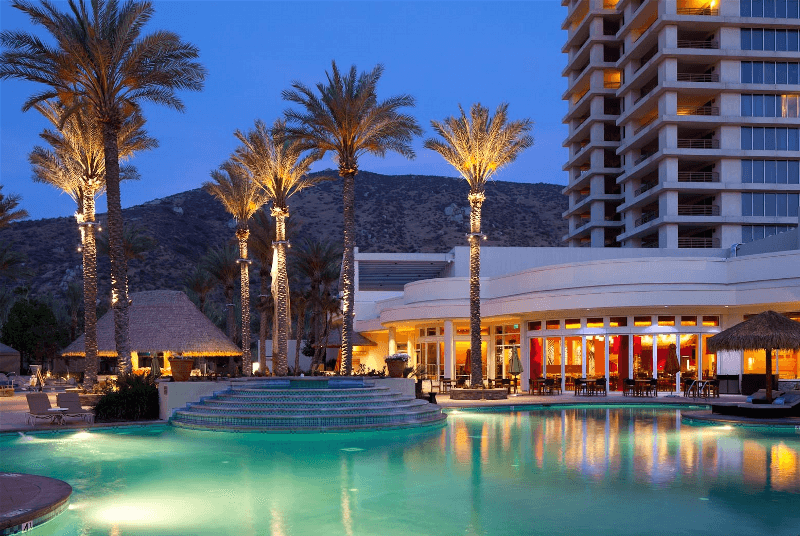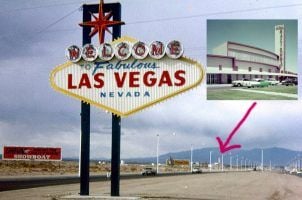Tribal Gaming Growth Hurts Laughlin and Reno, But Vegas Still Bulletproof, Says Analyst
Posted on: July 19, 2017, 06:22h.
Last updated on: July 20, 2017, 08:46h.
The National Indian Gaming Commission reported this week that America’s tribal gaming operators collectively generated $31.2 billion in gross gaming revenue, a 4.4 percent increase over 2015.

The biggest growth, year over year, for tribal gaming nationwide was the Sacramento, California region, with an increase of 6.3 percent to $8.4 billion. Meanwhile, the Phoenix region exhibited fourth-best revenue increase in the US, growing 4.4 percent to $2.9 billion.
It’s clear Indian casinos in states bordering Nevada are enjoying robust health, but what impact is this having on the Silver State’s casino sector? Is tribal gaming a threat to Nevada?
Tribes Thinking Big
Well, not so much to Vegas, gaming analysts told the Las Vegas Review-Journal this week, but it’s very likely having a negative effect on the north Las Vegas sector and the Reno and Laughlin markets in particular, forcing those cities to rethink their approach.
Bo Bernhard, executive director of UNLV’s International Gaming Institute, believes that the Laughlin and Reno markets have certainly been adversely affected by competition from Indian gaming properties, which are now matching their commercial counterparts outside of Vegas in terms of the entertainment and attractions on offer.
In short, tribal gaming, which began largely with 1970s bingo parlors, is thinking big these days.
“It is an amazing and remarkable story for the tribes,” Bernhard told the Review-Journal. “In Arizona, they have extremely well-run professional properties, Gila River and Talking Stick, both of which are really nice, have great management and continue to improve,” he said.
“Northern California tribal gaming was really the gaming beast that killed Reno. It was those really impressive Northern California properties that are every bit as nice as any of the smaller properties here. Working with Caesars and Station, they’ve brought with them a Las Vegas-ized approach to management and grown into their own unique entities.”
Vegas-ization
Bernhard added that Laughlin has been forced to market to different niches in order to deal with the competition, while Reno has reinvented itself through economic diversification.
The Vegas sector, meanwhile, should not be too concerned. In fact, Bernhard thinks the “Vegas-ization” of tribal gaming properties may even act as a kind of indirect marketing campaign for the city, as residents of California and Arizona are offered a taster of the real Vegas experience across the border.
After all, the taster is increasingly provided by Vegas-based casinos operators themselves.
Caesars Entertainment operates several Indian casinos in California and Arizona, including the Harrahs Resorts SoCal near San Diego, in partnership with the Rincon Band of Luiseño Indians, while Station Casinos partners with the Federated Indians of Graton Rancheria on the Graton Resort in Rohnert Park, California.
Related News Articles
Connecticut Airport Casino Wins Right-To-Know Case Against MGM
Wynn Land Deal Shows Deep Connections Between Wynn, Trump, and Ruffin
Most Popular
FTC: Casino Resort Fees Must Be Included in Upfront Hotel Rates
Genovese Capo Sentenced for Illegal Gambling on Long Island
NBA Referees Expose Sports Betting Abuse Following Steve Kerr Meltdown
UPDATE: Former Resorts World & MGM Grand Prez Loses Gaming License
Most Commented
-
UPDATE: Whiskey Pete’s Casino Near Las Vegas Closes
— December 20, 2024 — 30 Comments -
Caesars Virginia in Danville Now Accepting Hotel Room Reservations
— November 27, 2024 — 9 Comments -
UPDATE: Former Resorts World & MGM Grand Prez Loses Gaming License
— December 19, 2024 — 8 Comments -
FTC: Casino Resort Fees Must Be Included in Upfront Hotel Rates
— December 17, 2024 — 7 Comments
















No comments yet